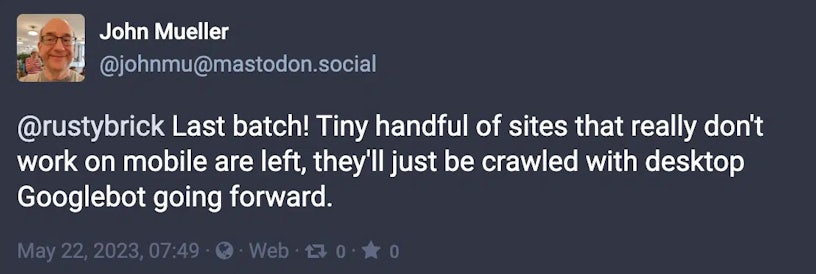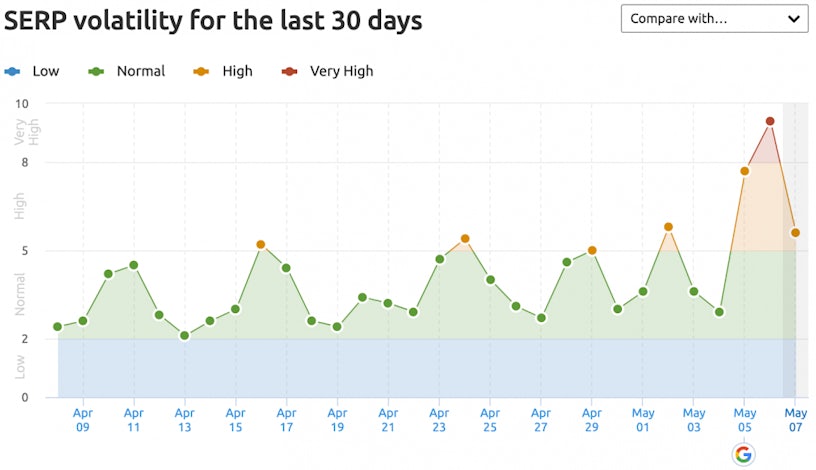It has been estimated that Google processes approximately 99,000 search queries every second, equating to 8.5 billion searches per day. As the internet evolves it comes as no surprise that Google has to constantly evolve and diversify to ensure it continues to deliver the most helpful and reliable results for users. This is done through small and core updates that seek to improve its search algorithms and systems.
In recent decades, households with access to the Internet have increased from ~15% in the UK in 1999 to 46% in 2003 and by 2020, 96% of households had access to the internet. Search had to improve from the old style directory format to meet the fast-growing demand created by users who had so many questions.
Sergey Brin and Larry Page, the creators of Google, wanted to make the internet a more accessible place but this was never going to happen overnight and here, we’ll uncover the key milestones that have got us to where we are today.
Navigate the contents of this article:
- How does Google’s search algorithm work?
- 2025 algorithm updates
- 2024 algorithm updates
- 2023 algorithm updates
- 2022 algorithm updates
- 2021 algorithm updates
- 2020 algorithm updates
- 2019 algorithm updates
- 2018 algorithm updates
- 2017 algorithm updates
- 2016 algorithm updates
- 2015 algorithm updates
- 2014 algorithm updates
- 2013 algorithm updates
- 2012 algorithm updates
- 2011 algorithm updates
- 2010 algorithm updates
- 2009 algorithm updates
- 2008 algorithm updates
- 2007 algorithm updates
- 2006 algorithm updates
- 2005 algorithm updates
- 2004 algorithm updates
- 2003 algorithm updates
Google improves its algorithms and systems through hundreds of updates each year
To adapt to the ever-evolving landscape of search, it has been estimated that Google makes hundreds of updates to its platform each year, including several known large core updates. However, most of these go unnoticed and sometimes these are not officially confirmed by Google themselves.
Unlike the small updates, core updates are significant and many websites do experience fluctuations in their rankings and traffic following an update.
However, these updates are not considered by Google to penalise websites. Instead by improving its algorithms, Google is looking to serve content that satisfies the search intent of the user whilst providing a high-quality experience.
How does Google’s search algorithm work?
Google’s algorithm is incredibly complex and the exact details of how it works are not publicly known. That being said, Google does provide some advice to site owners including the importance of adhering to the Google Webmaster Guidelines and prioritising people-first content. Abiding by this advice and being aware of any upcoming or recent core updates can help you routinely assess and improve your content, demonstrating to Google that your content deserves to rank well with their systems.

A history of Google algorithm changes
2025 Google Algorithm Updates
March Core Update 2025
On the 13th of March, Google announced the rollout of its first core update of 2025. Volatility spikes were noted at the beginning of March across both desktop and mobile, most notably around the 6th and 7th of March. This led many to speculate that another update was on the horizon. However, Google later confirmed that this volatility was unrelated to the incoming update.
During the update, volatility peaked during its rollout between the 14th and 16th of March, remained high until peaking again around the 20th to 22nd of March, and then once more on the 26th before the update concluded on the 27th of March.

Source: Semrush
Multiple data providers reported that the March 2025 core update had similar volatility to the December 2024 update. However, volatility levels varied across industries with the health sector and finance industry seeing the most ranking fluctuations.
During the rollout period, SERP inconsistencies were identified across third-party tracking tools which suggested significant drops in rankings for some. As the discrepancies were likely artificial, those affected were advised to rely on Google Search Console data instead.
If your site was affected by the 2025 March core update, see our white paper on how to recover from a Google algorithm update. Alternatively, get in touch today to discuss what Impression can do to help you get back on track.
2024 Google Algorithm Updates
December Spam Update 2024
On December 19th, Google launched its third and final spam update of 2024. Taking seven days to roll out, this update followed the March and June spam update earlier in the year.
Analysis saw some sectors like health, finance, retail, and travel experience varying degrees of impact, with the health niche experiencing notable fluctuations across multiple positions. Due to the timing of the December 2024 spam update, it was noted that holiday traffic fluctuations may have had an impact on visibility. Because of this, website owners were advised to focus on rankings rather than traffic to assess the effects.
The influx of spam updates throughout 2024 and the introduction of tightened spam policies saw, some publishers, like Forbes, adjust their content strategies. In light of these changes and the growing focus on parasite SEO, Forbes made a deliberate effort to reduce its dependence on freelance writers for specific types of content.
December Core Update 2024
Swiftly following the core update in November, another was announced just 8 days later. This marked the fourth core update of 2024.
Launching on the 12th of December and concluding on the 18th of December, the rollout of the December core update was quick and it came as a surprise to many, especially as it occurred so soon after the previous one. However, Google announced their reasoning for this on X, stating:
“If you’re wondering why there’s a core update this month after one last month, we have different core systems we’re always improving.”
Despite being the fastest documented official core update, it was reported as being more volatile than the November 2024 core update. Volatility tracking tools confirmed this too with volatility remaining high beyond its conclusion, causing many to report drastic drops in traffic.
From this point on, the release of multiple core updates in rapid succession looked set to become the norm. Following an event in December held by Google, a speaker from the search relations team announced that Google will be having more core updates more frequently.
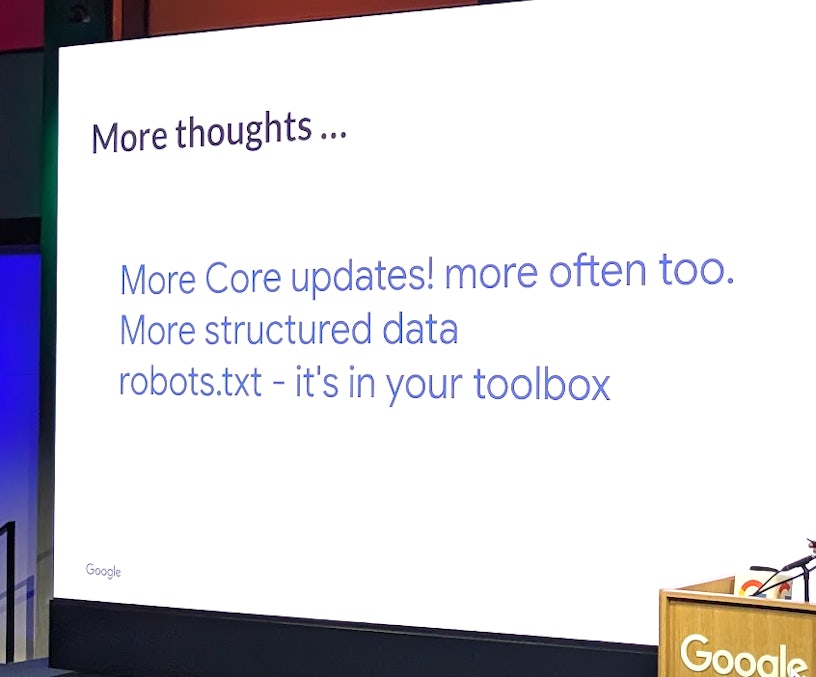
Source: Search Engine Roundtable
November Core Update 2024
The November Core Update began on the 11th of November and concluded on the 5th of December. Taking just under 24 days to complete, this core update was smaller than the most recent updates and focused on making the search results more relevant and helpful to users.
SERP volatility was low leading up to the update but spiked during key phases, particularly on November 25 and December 4, with higher fluctuations in the US compared to the UK.
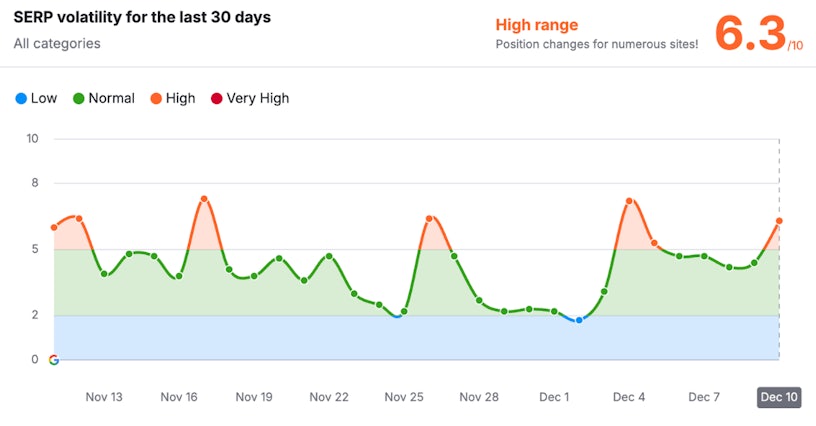
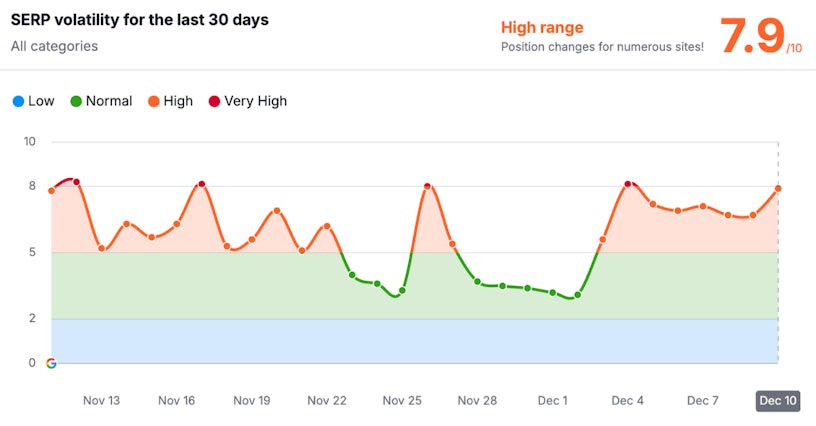
Source: Semrush Sensor
Analysis following this core update showed a significant overlap between organic search results and citations in Google’s AI Overviews (AIO). Websites that ranked highly in organic search have a strong likelihood of appearing as citations in AIO summaries.
E-commerce and product-focused content saw higher volatility with regard to AIO, while educational and research-led content remained relatively stable. For e-commerce brands, this demonstrates the need to diversify content to create supporting material that addresses common questions and buyer intent to improve visibility in AIO whilst continuing to optimise product pages for commercial keywords.
August Core Update 2024
The August Core Update was the second core update of 2024. Launched on the 15th of August, this update was designed to improve the quality of search results by prioritising genuinely helpful content over content that has been created purely for the purpose of performing well on search. The update finished rolling out on 3rd September.
In the official announcement on their blog, Google stated that they have taken into account feedback from creators since the rollout of the previous core update in March and the Helpful Content Update back in September 2023.
There was significant SERP volatility in the US whilst the update was rolling out, and this continued following the completion of the update:
Source: Semrush Sensor
In the US, ranking changes were particularly pronounced for websites in the beauty and fitness space, whereas less volatility was observed across the health, science, law, and government categories. There was less substantial volatility in the UK and throughout most of Europe.
Following the rollout of Google’s AI Overviews, it was also confirmed by John Mueller that core updates do affect them. This included changes in the sources and how information is presented within the AI summaries.
Alongside the update, Google also refined its advice for recovery. The revision of this document emphasises that website owners should wait a full week before implementing any changes to allow for proper analysis, comparing before and after the update. They also advise that only large drops in position should be acted upon and any changes made should be user-centric improvements while avoiding “quick fixes”.
June Spam Update 2024
In their ongoing efforts to improve the quality and helpfulness of content across the SERPs, Google released their second spam update of the year in June.
Launching on the 20th of June and concluding on the 27th of June, this was a broad spam update and did not look to not specifically target link spam.
Google also clarified that the June spam update did not implement an algorithmic enforcement of its site reputation abuse policy which was brought in a couple of months earlier. Instead, this policy continued to be enforced through manual actions.
The June 2024 spam update was broad and focused on various forms of spam, including:
- AI content generated automatically with the sole intention of improving search rankings.
- Purchased or sold links designed to manipulate rankings.
- Thin, duplicated, or low-quality content.
- Hidden redirects or other deceptive techniques.
Those whose sites were affected by the June 2024 spam update were advised to refer to Google’s spam policy documentation. As with all their updates, the key takeaway from this update was that focus should be placed on creating unique, valuable content that is genuinely useful for users.
March Spam Update 2024
The spam update which rolled out in March coincided with the March Core Update, beginning on the 5th of March. It took a total of two weeks to fully roll out and looked to target AI-generated content and authority abuse.
Alongside this update, Google also introduced three new spam policies as Google attempted to double down on those taking advantage of manipulative tactics. These new policies included scaled content abuse, expired domain abuse, and site reputation abuse, with the first two taking immediate effect and the latter set to come into place in May.
March Core Update 2024
The March Core Update was the first major update of 2024. Beginning on 5th March, it was the longest roll-out of its kind, taking a total of 45 days to complete and concluding on 26th April. Alongside new spam policies and the release of the March spam update, this core update looked to target low-quality content, including AI-generated spam, promising a 45% reduction in low-quality, unoriginal content in search results.
Through this update, Google also incorporated its helpful content system into the core algorithm. This change was made to help Google evaluate the true value of a website, taking a more holistic approach and factoring multiple evaluations through systems which work in tandem with one another.
Within a matter of days, websites across various industries and sectors felt the brunt of this update with those engaging in manipulative tactics receiving harsh penalties including complete removal from Google’s search index.
A study conducted by Orginality.ai looked into the sites that had been negatively affected by manual actions and found that:
- 100% of the websites had some posts that were AI-generated
- 50% of the sites had 90%-100% of their posts as AI-generated
2023 Google Algorithm Updates
November 2023 Reviews Update
The update to Google Search’s reviews system commenced on 8th November and ran through to 7th December. This somewhat lengthy update focused on targeting review content on a page-level basis by helping the search engine when evaluating and ranking both review-related content and search queries.
Google also made it clear that this would be the final announced update to their Review System as any future updates will be made on a regular and ongoing basis.
November 2023 Core Update
The November core update was the fourth and final core update of the year. Beginning its rollout on 2nd November, this update took place very shortly after the conclusion of the October core update, leaving many questioning why it was so soon.
In answer to this question, Google released some advice in a Q&A on Google Search updates stating that “We have different systems that are considered core to our ranking process; this month’s core update involves an improvement to a different core system than last month. However, our guidance about core updates is the same for both.”
Whilst this update caused a considerable amount of volatility, the average level of volatility appears to be comparable to that observed during the October Core Update. On average, websites lost an average of 2.76 positions during the November update, compared to 2.62 in October.
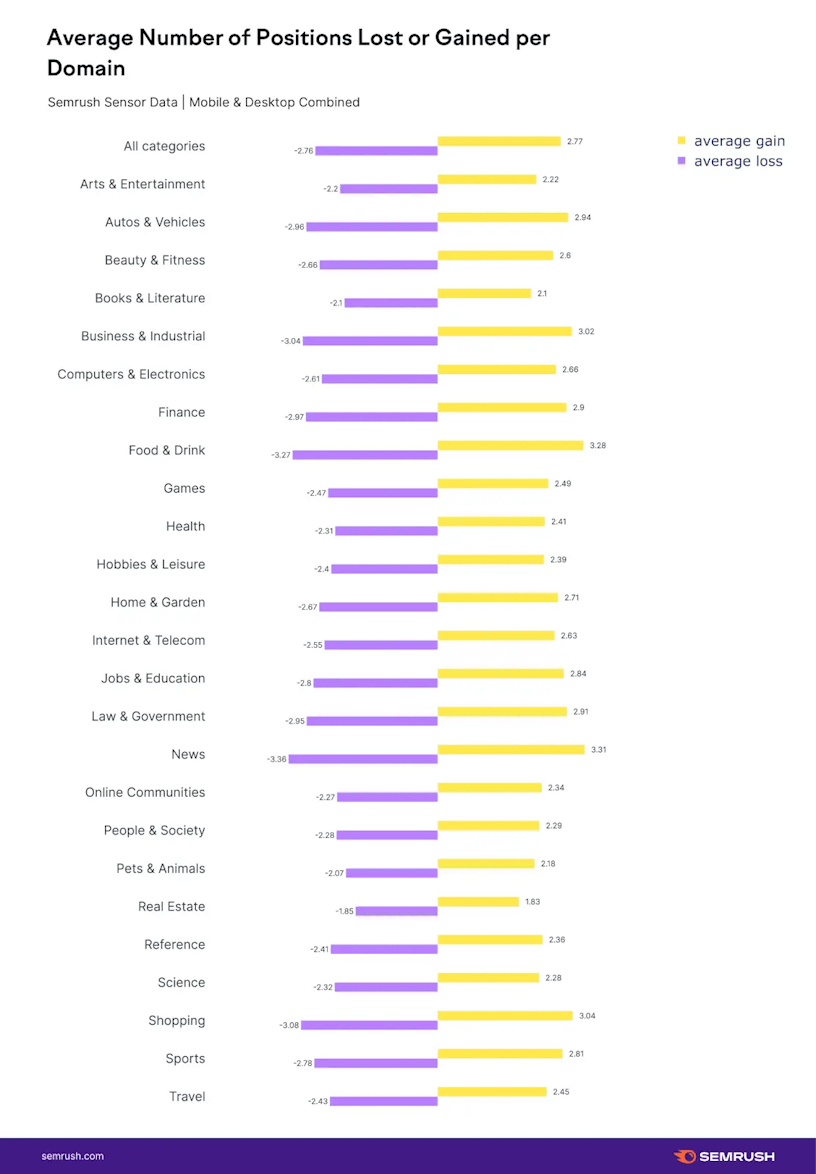
October 2023 Core Update
Google completed its rollout of the October 2023 Core Update on 19th October. Spanning over a couple of weeks, discussions within the SEO community suggested that this Google core update was considered slightly less volatile than the August 2023 update.
Analysis from Semrush showed that the average number of positions lost or gained in the October 2023 update was roughly 2.5 positions, compared with the August core update which saw just over 3.
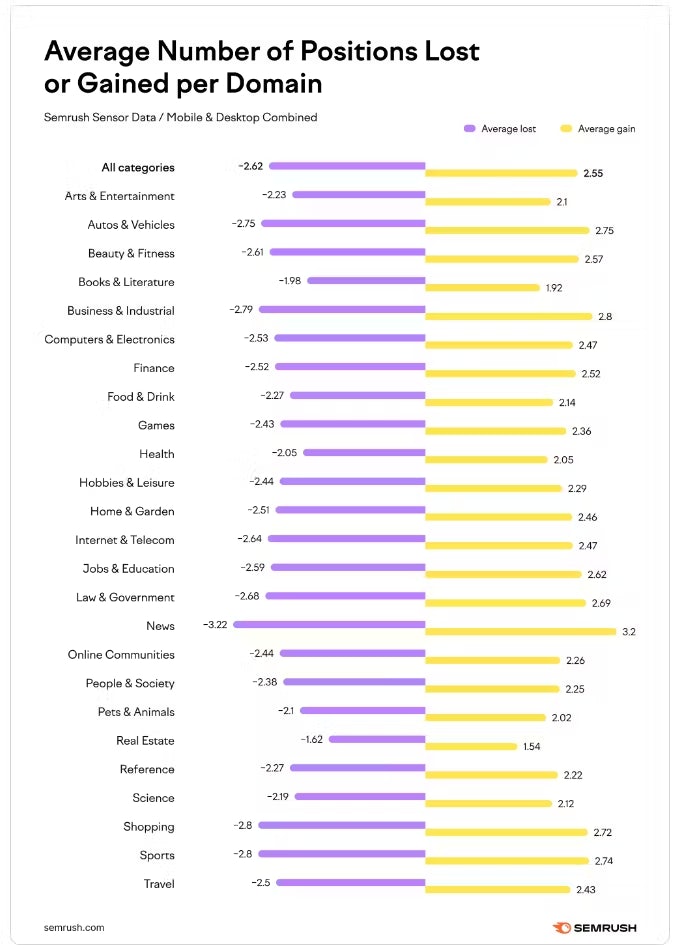
October 2023 Spam Update
Launching on the 4th of October, the October 2023 Spam update coincided with the October 2023 Google core algorithm update. The spam update was designed to target websites and pages which use unsavoury tactics such as cloaking, content scraping and auto-generated content.
It was likely this was an update to Google’s spam detection system known as SpamBrain. This system utilised AI and machine learning to identify and penalise those who engage in spammy practices.
September 2023 Helpful Content Update
The September Helpful Content update placed a greater focus on prioritising people-centric content above content created for the sole purpose of ranking well on search engines.
Through this update, we saw Google loosen their guidance on machine-generated content, suggesting a shift in its attitude towards AI-generated content. Previously, Google emphasised the fact that helpful content should be written by people:
“Google Search’s helpful content system generates a signal used by our automated ranking systems to better ensure people see original, helpful content written by people, for people, in search results.”
However, this seems to have been dropped in their most recent guidance update:
“Google Search’s helpful content system generates a signal used by our automated ranking systems to better ensure people see original, helpful content created for people in search results.”
August 2023 Core Update
Google’s second core update of 2023 rolled out over 16 days. Rank volatility before, during and after the update was steady, a stark contrast to the previous Google Core Update in March which saw wide volatility spikes as shown by the Semrush Sensor.
Furthermore, observations made by members of the SEO community suggested that websites that saw the biggest increases in visibility, clearly demonstrated “Experience” through their content, indicating a renewed emphasis on this element of E-E-A-T.
April 2023 Reviews Update
Just a couple of months after the February Product Reviews update, Google released another. The April 2023 Reviews Update was more volatile than the previous Reviews Update in February 2023 as shown by the graph below.
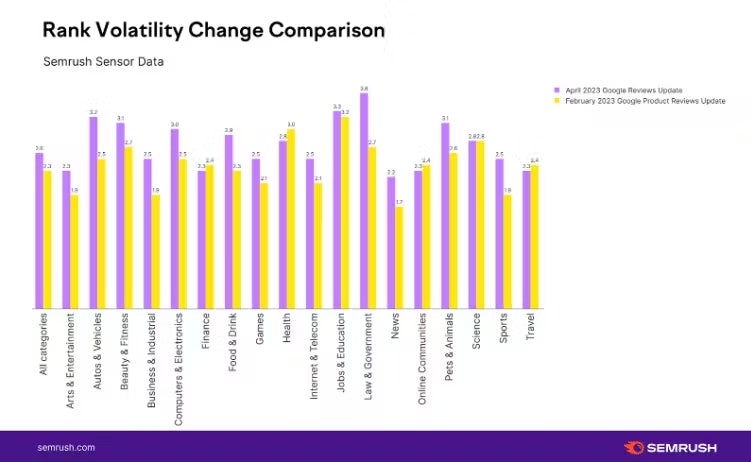
This higher volatility was suspected to have been caused by the update including all types of reviews, not just product reviews. Despite its name, Analysis from Sistrix suggested that this update affected more websites than just the ones with reviews, suggesting that this looked at E-E-A-T more broadly.
March 2023 Core Update
The March 2023 Core Update was significantly more volatile compared to the previous Core Update in September 2022. However, the period of volatility was short-lived compared to previous core updates.
Historically, it has been common for there to be prolonged periods of high volatility within the SERPs as core updates are rolled out. The March 2023 Core Update was different as demonstrated by the Semrush sensor.

Although this update did cause very high levels of volatility, it was short-lived and this was also the case for the November 2021 core update. This led many in the SEO community to question if long periods of high volatility were a thing of the past.
February 2023 Product Reviews Update
The February 2023 Product Reviews Update was the sixth release of its kind, focusing on product review content. With an emphasis on blogs, articles and pages, this particular update looked to reward high-quality reviews which offered analysis and original research by those who are experts in the field. Reviews that feature on product and service pages were not taken into consideration.
This update was more widespread than previous updates incorporating languages other than just English, including English, Spanish, German, French, Italian, Vietnamese, Indonesian, Russian, Dutch, Portuguese, and Polish.
2022 Google Algorithm Updates
December 2022 Link Spam Update (14th December 2022)
The link spam update featured the introduction of SpamBrain, an AI-based spam prevention system. Which detects not only spam but also sites buying links and sites that are used to pass outgoing links. The update took 29 days to roll out which was nearly double the estimated time, the update served to neutralise spammy links for domains and will have likely negatively affected pages that utilised these practices.
December 2022 Helpful Content Update (6th December 2022)
This update was rolled out globally and took 38 days to be actioned, likely because it affected all languages. It was aimed at allowing Google’s systems to better detect forms of low-quality content created for search engines and not with people as the focus.

October 2022 Spam Update (19th October 2022)
This update followed the previous spam update which occurred 11 months prior in November 2021. This update was global in scope and focused primarily on link spam, penalising those that go against Google’s spam policies. Those who were affected by the update were advised to review the spam policies and make appropriate changes.
September 2022 Product Reviews Update (20th September 2022)
The September 2022 product review update only applied to those that feature product review articles on their site and it focused on those written in English. This update rewarded high-quality reviews from users who had actively used and tested the product they were reviewing. This update only applied to product review articles, not customer reviews.
September 2022 Core Update (12th September 2022)
This update was the second core update of 2022 affecting websites globally. It focused on evaluating content against the E-E-A-T framework. Whilst some volatility was noted, this core update was considered less impactful compared to previous updates as shown in the graph below.
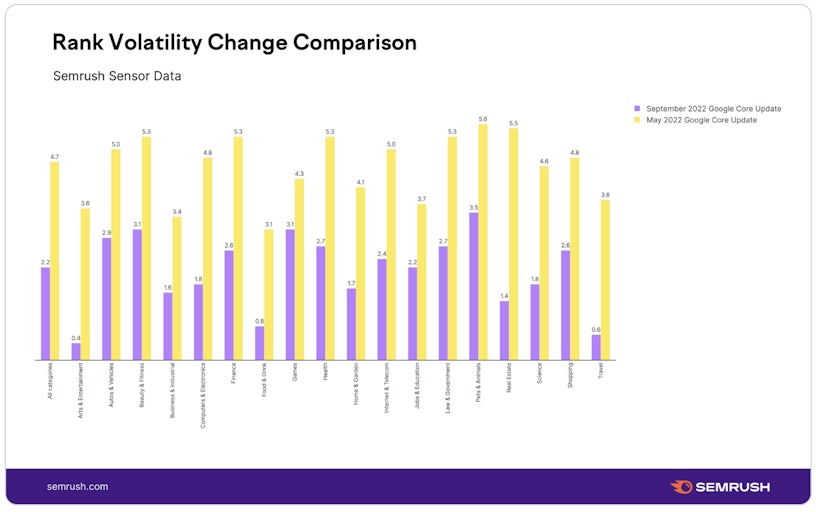
August 2022 Helpful Content Update (25th August 2022)
The main aim of this update was to reward content that satisfied the user’s intent whilst also adhering to SEO best practices. We were advised to continue producing user-first content and avoid content that solely focused on search engines.
Petar Jovetic, organic director at Impression, comments:
“Since 2022, the subsequent Helpful Content Updates have evidenced Google’s eagerness to double down on the pivotal role that user-centricity has come to play in its ranking algorithms.
“Whilst the Helpful Content guidelines are straightforward in and of themselves, the underlying principle that our content should offer users original, expert insights and a satisfying experience is now a foundation of modern SEO.”
July 2022 Product Reviews Update (27th July 2022)
It was advised that reviews should be “evaluated from a user’s perspective” and they should “demonstrate that you are knowledgeable about the products reviewed”. Reviews that were accompanied by a video or images were also looked upon favourably.
May 2022 Core Update (26th May 2022)
The May Core Update was the first core update in 2022. The Semrush sensor identified that there was significant volatility on the day that Google announced the update. However, this soon returned to normal levels. This volatility pattern was comparable to patterns seen during both the July 2021 Core Update and the November 2021 Core Update.

March 2022 Product Reviews Update (23rd March 2022)
The product review update began on 23rd March and ended on 11th April. The third of its kind, this product review update focused on incorporating more signals and criteria into their ranking algorithm. Whilst this was not a penalty as such, product reviews that included “insightful analysis and original research” were rewarded.
2021 Google Algorithm Updates
December 2021 Product Review Update (1st December 2021)
The December 2021 product review update was initially rolled out on 1st December and concluded on 21st December. The update was the second product review of 2021 and was considered bigger than the previous one that took place in April. It aimed to promote review content that went above the templated information seen on the web. Those who were negatively impacted were advised to either provide more supporting multimedia content with their reviews or to provide links to multiple sellers, giving users more choices.
November 2021 Local Search Update (30th November 2021)
Taking place between 30th November and 8th December, the local search update involved “a rebalancing of various factors”. Whilst Google was light on insight, many users noted that their Google Business Profile which was once performing well appeared to be replaced by sub-par profiles. Users dubbed this update as the “Vicinity” update.
November 2021 Broad Core Update (17th November 2021)
In November we saw the final Broad Core Update of 2021 which was rolled out from 17th November to 30th November alongside some of the biggest holiday seasons of the year including Black Friday, Thanksgiving and Cyber Monday. Discussions around this update suggested it “hit fast and hard”, as demonstrated by the screenshot below from Semrush Sensor.
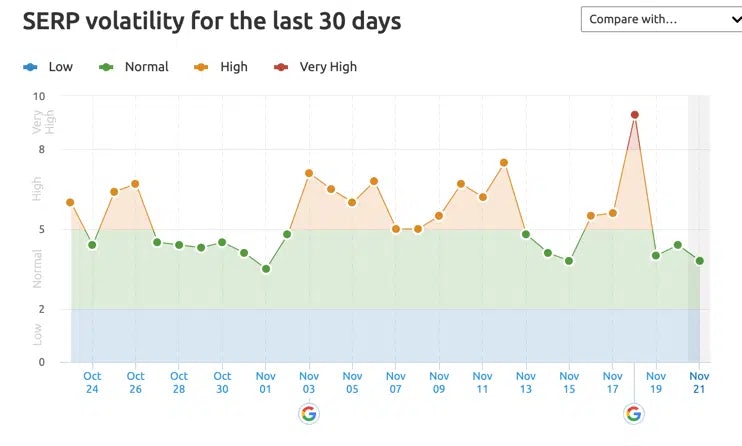
November 2021 Spam Update (3rd November 2021)
The spam update in November was the fourth and final spam update of 2021. This update focused on preventing harmful and untrustworthy websites from being listed in the Google index. Websites that offered little value or utilised Black Hat SEO methods were penalised by utilising their AI systems to filter out harmful websites.
July 2021 Google Link Spam Algorithm Update (26th July 2021)
The third spam update of 2021 was rolled out over two weeks. This update focused on sponsored, guest and affiliate content. Site owners were warned to tread carefully when handling links within content, particularly if an exchange of value is involved. Google emphasised the importance of adding tags to links if these types of links are used.
July 2021 Core Update (1st July 2021)
The July 2021 update didn’t come as a shock. It was pre-announced during the rollout of the core update that took place a month prior. This was due to some planned improvements not being ready in time.
Whilst it was smaller and less impactful than the June 2021 Core Update and was fast to roll out., However, volatility was still noted to be high across many industries. Six industries in particular felt the brunt, including real estate, beauty & fitness, science, shopping and pets & animals.
June 2021 Spam Update (23rd June and 28th June 2021)
Both spam updates that took place in June 2021 were rolled out within one day. Google did not state what kind of spam this update was targeting and instead linked this update to their general spam prevention notices. However, it was noted in the SEO community that these global updates affected both web pages and images.

June 2021 Page Experience Update (15th June 2021)
The page experience update was slow in comparison to the spam updates that followed and completed rolling out at the end of August. This made it difficult for site owners to understand if they were affected.
This update considered several page experience signals including the three Core Web Vitals metrics. Along with this update, Google also introduced their Page Experience report and Search Performance report. Both of which continue to provide valuable insights as well as highlight opportunities for improvement.
June 2021 Core Algorithm Update (2nd June 2021)
The June 2021 Core Update was a unique one. It was announced alongside another core update which was set to take place the following month. This was due to certain planned improvements not being ready.
This update appeared to have a slow roll-out and it was observed that the websites which experienced the biggest improvement in average position were those relating to finding local businesses or exploring local infrastructure.
On the flip side, Semrush highlighted that the worst affected websites were those with a monthly traffic of 500K or less.
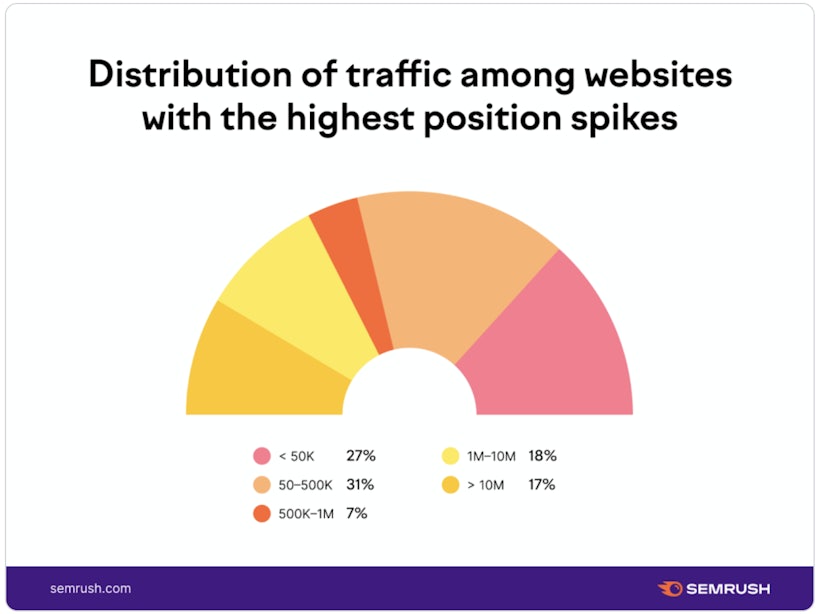
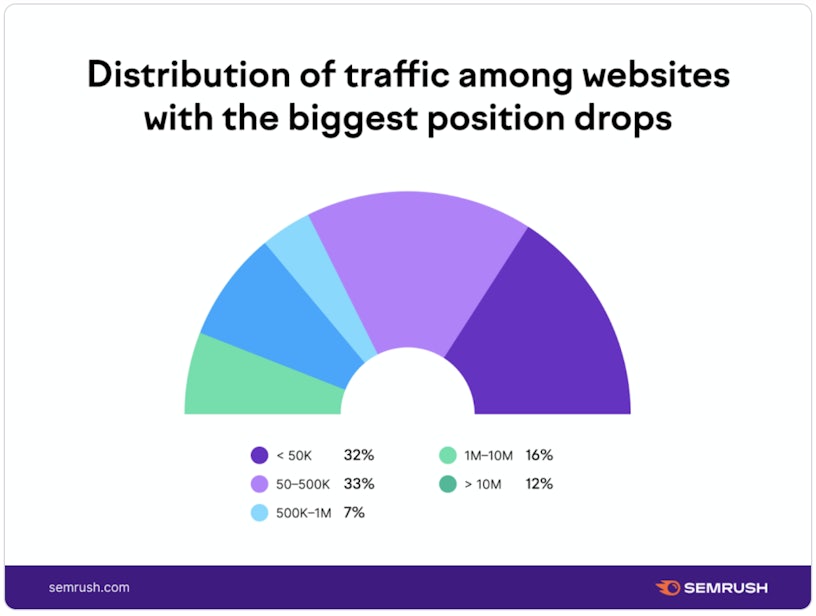
Images taken from Semrush
Because the July Core Update was soon to follow, users were advised against reacting to changes from this update and instead waiting for the following update to rollout.
May 2021 MUM
Short for Multitask Unified Model, MUM was first introduced by Google in May 2021. Claimed to be 1000 times more efficient than its predecessor, BERT, MUM sought to further revolutionise how search engines handle and interpret user’s search requests.
Using artificial intelligence and natural language understanding, MUM is capable of understanding up to 75 languages as well as interpreting and understanding images, videos and audio files.
BERT was introduced with the primary purpose of understanding language and intent, but MUM took this step further. Not only is MUM capable of analysing information in different languages, but it is also capable of generating accurate responses based on the information it receives.
April 2021 Product Reviews Update (8th April 2021)
The first of its kind, the product review update was rolled out throughout April 2021. Google stated that the update aimed to promote good quality reviews that provided helpful insight and analysis, going above the templated reviews you commonly see.
This update focused on English-language reviews at a global level.
2020 Google Algorithm Updates
December 2020 Core Update (3rd December 2020)
The third and final update of 2020 was released early in December. Chatter amongst the SEO community and tool providers noted that this was a very big update, considered bigger than the May 2020 update.
Frustration was still felt by many following the last core update in May. Barry Schwartz stated that he had received daily emails from businesses that were still feeling the effects of the previous update.
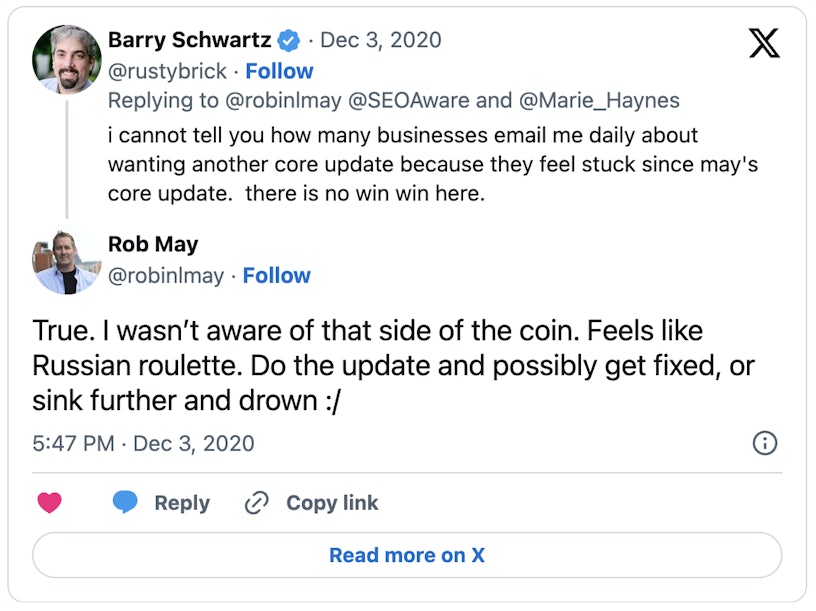
September 2020 Mobile-first indexing
In 2020, Google announced that from September they would be switching completely to mobile-first indexing. However, the concept of mobile-first indexing wasn’t novel and testing had been taking place several years before this announcement.
Google initially began testing mobile-first indexing as far as 2016 which began as an experiment on a much smaller scale in response to the accelerated increase in mobile search. After a few years of testing, they then began rolling out their mobile-first index in March 2018 which ran concurrently with desktop-first indexing.
Fast forward to 2020 and Google began crawling websites using only the mobile Googlebot. John Mueller confirmed three years later that Google had finally completed its last efforts to move sites over to mobile-first indexing. This meant that any site not moved over would remain on the desktop index indefinitely.
May 2020 Core Update (4th May 2020)
The core update in May 2020 was considered a big update, even in comparison with the previous core update in January which was considered substantial. Semrush highlighted that the previous core update caused a volatility of 8 points, whereas this update saw rates ranging from 9 to 9.4.
The worst-hit categories include Arts & Entertainment, Online Communities, Businesses & Industrial and Games. Whereas the News category was rewarded in this update.
Observations by the SEO community suggested the update was related to E-E-A-T signals, mostly relating to domains with strong trust signals. Websites with high-quality backlinks were seemingly the most rewarded and affiliate websites were not.
January 2020 Core Update (13th January 2020)
The first core update of 2020 was considered to be a big one. Whilst effects of the update were noticed across every niche, YMYL (your money, your life) categories appeared to be the most affected.
SearchMetrics shared some specific examples showing the disparity between two websites within the health sector, Onhealth.com and Verywellhealth.com
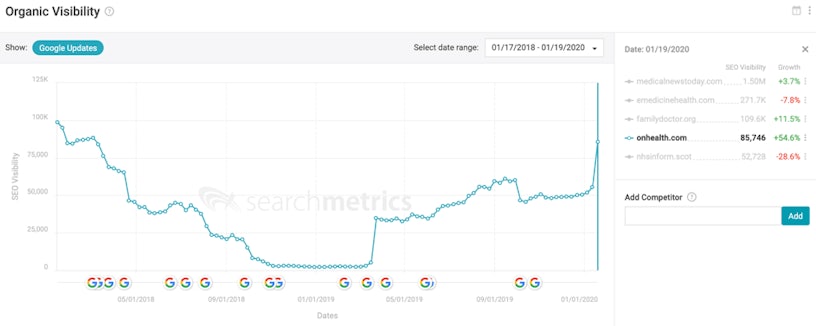
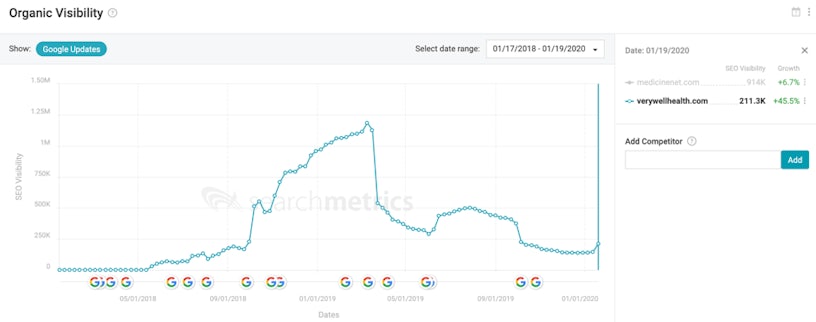
Images from Search Engine Land
Websites with thin content pages were also penalised, relating back to the crucial E-E-A-T signals that Google favours.
2019 Google Algorithm Updates
October 2019 BERT (21st October 2019)
The introduction of the Google BERT update was set to transform the way that Google processed search queries. Previously, search engines offered relevant answers to user queries by understanding natural language. BERT enhanced Google’s algorithms by utilising machine learning to understand the context in which words appear rather than analysing them individually and in sequence.
The impact of BERT was substantial, affecting 10% of search queries which were predominantly long-tail keywords. Not only did it affect regular search queries, but it also enhanced featured snippets by providing concise and relevant text that directly addresses user queries.
September 2019 Broad Core Algorithm Update (24th September 2019)
The September 2019 Core Update was global, covering all markets and search indexes. Commentary from the SEO community suggested that those in the fields of healthcare and finance were most affected, as well as other industries covering sensitive E-E-A-T topics.
Video content that targeted informational keywords appeared to have been given a boost. Following this core update, websites that had previously sat in position 1, found themselves in position 4 below the video carousel. This meant that these websites likely saw a loss in traffic for informational keywords that they previously ranked well for.
August 2019 Featured Snippet Update (1st August 2019)
In August, Google launched a new algorithm to address the relevancy, accuracy and freshness of featured snippets. The update aimed to improve the system’s understanding of the longevity of information in order to distinguish when information becomes outdated.
June 2019 Diversity update
The diversity update rolled out following June’s core update. Whilst this update was considered to be minor, it did show promise for smaller retailers who regularly have to compete with the larger players in the market.
Google gave the following update on X stating that SERP listings would be limited to show no more than two listings from the same domain in the results. By limiting the number of times a domain can appear in a single SERP, Google was looking to allow smaller websites to rank for highly competitive keywords.
In a study conducted by Searchmetrics published by Search Engine Journal, they compared results from thousands of keywords from March 2019 to June 2019 and found:
- Zero results were found containing more than 3 URLs from one domain.
- 3.5% of searches contain 3 URLs from one domain, down from 6.7%.
- 44.2% of searches contain two URLs from the same domain, up by less than 1% from before the update.
- 52.3% of searches return unique domains for all positions.
Transactional searches were most impacted through this update, with users seeing a greater range of products when using keywords with transactional intent. However, informational searches were still returning multiple results from the same domain showing that relevancy was still deemed more important than diversity.
June 2019 Core Update (2nd June 2019)
The June 2019 Core Update saw changes in rankings and changes to the SERPS themselves.
Whilst the update saw many of those who suffered in the March update return to the top of the SERP, we also saw an increase in the number of video carousels appearing on desktop devices.
Key takeaways from this update suggested that E-E-A-T content is still key to success when competing in the SERPs, particularly concerning YMYL niches.
March 2019 Core Update (12th March 2019)
Analysis of the first update of 2019 saw that many of the websites that benefited from the previous core update in August 2018, saw a big decline in their visibility. This was most notable for those in the health sector.
Websites with a strong brand profile and broad focus of content appeared to benefit whilst niche websites saw a decline in their rankings.
Analysis of this update suggested that user signals were growing in importance. Research by Malte Landwehr from Searchmetrics found that there was a correlation between user signals and the websites that benefited from the update. His findings suggested that the websites that improved their visibility had higher results for time on site, page views per visit and lower bounce rates.
2018 Google Algorithm Updates
August 2018 Medic Update (1st August 2018)
The August 2018 Core Update was nicknamed the ‘Medic Update’ due to its focus on health and medical websites, however, this was not officially confirmed by Google.
Whilst the health sector and other YMYL niches were the most affected, Data from Moz showed that other areas affected included vehicles, beauty & personal care, hobbies & leisure and arts & entertainment.
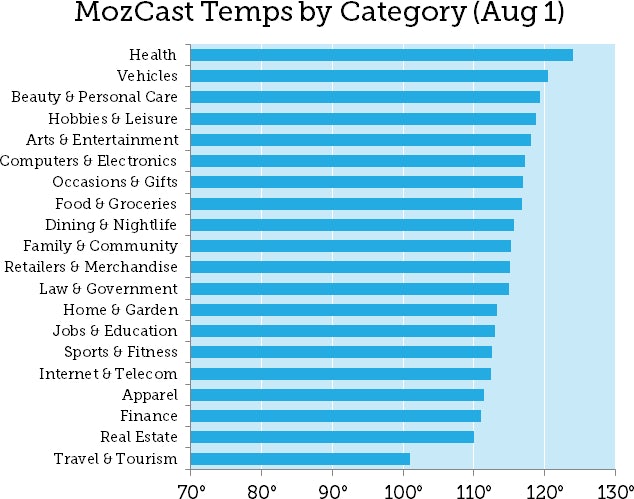
Discussions in the SEO community put this update down to Google considering the E-E-A-T offering of a website. Website owners were advised to continue producing high-quality content that addressed both the user’s search intent with a focus on expertise, authoritativeness and trustworthiness.
April 2018 Broad Core Algorithm Update (16th April 2018)
Initial speculation suggested that this update focused on low-quality pages, however, this was later disputed as John Mueller confirmed it was about relevance.
Those who were affected by the update were advised their focus should be on ensuring their content is relevant to the user in answering their search query.
The Google penalties guide received a new entry following Google’s new Algorithm update. It placed a focus on quality, where websites with high-quality and informative content were bumped ahead of the competition. On the other hand, those with thin content were penalised.
March 2018 Broad Core Algorithm Update (9th March 2018)
The March 2018 broad core algorithm update was the first of three this year. Details of this update were sparse but Google did put out a statement to say for websites that experienced a drop in rankings, this does not suggest that there is anything wrong with the pages.
Instead, they said the change in their systems is to benefit those pages that were previously under-rewarded. Google simply advised website owners to continue to create and publish great content.
2017 Google Algorithm Updates
December 2017 Maccabees Update (12th December 2017)
In December 2017, it was confirmed by Google that “several minor changes” were made to the algorithm after there was a notable period of volatility for some websites between 12 and 14 December.
A spokesperson for Google downplayed the significance of the update emphasising that it involved several minor alterations rather than a single major update.
Reports following the update suggested that affiliate sites were most affected whilst e-commerce sites were not. The areas of focus for this update seemed to be an extension of the Fred update which occurred earlier in the year. Low-quality websites that engaged in spammy practices seemed to suffer as a result.
March 2017 Fred Update (7th March 2017)
The March 2017 “Fred” update focused on removing low-quality pages that were thin in content and used a large amount of advertisements. Websites that were affected were advised to reduce the amount of advertisements and evaluate their links and website structure.
January 2017 Intrusive Interstitials Penalty (10th January 2017)
Back in 2016, Google announced they would soon be targeting and devaluing pages that included an excessive number of interstitials and pop-up adverts. True to their word, the Intrusive Interstitials update was rolled out and whilst the impact was minimal, websites that were heavy with their use of intrusive pop-ups were penalised.

2016 Google Algorithm Updates
September 2016 Penguin 4.0 (27th September 2016)
This would be the final instalment of the Penguin update as Google announced it would become part of their core algorithm. This meant that Penguin would evaluate websites and links in real-time and changes would occur more frequently.
Another change that this final update brought was a shift in focus from entire websites to individual pages. Instead, Penguin became more granular and would alter the ranking of individual pages rather than the website as a whole.
May 2016 Mobile-friendly 2 Update (12th May 2016)
A year on from Google’s first mobile-friendly update, they announced that they would be strengthening their mobile-friendly ranking signals. Because the algorithm works page-by-page, the update did take some time to fully roll out, as was the case with the initial mobile-friendly update.
Websites that suffered at the hands of this update were unsurprisingly those that were not taking action to make their websites more mobile-friendly.
2015 Google algorithm updates
October 2015 RankBrain (26th October 2015)
After months of testing, RankBrain began to roll over towards the end of October 2015.
The two main responsibilities of RankBrain are to understand search queries and measure how users interact with the results and this replaced Google’s more simplistic algorithm.
RankBrain is a machine learning system that helps Google to match a query against the intent of the user. This means it constantly learns and adapts depending on the data it receives.
Initially, RankBrain was being used to process 15% of new queries. Fast forward to 2016, Google was using RankBrain for all queries.
Thanks to RankBrain, Google can understand what you’re asking and the intention behind your query. RankBrain also uses user signals such as organic click-through rate, dwell time and bounce rate to decide which pages will be most useful for that specific search query.
July 2015 Panda 4.2 (17th July 2015)
The final confirmed Panda update was rolled out over two months. Due to the slow roll-out, it’s unclear how significant the impact was but it was reported to have impacted 2-3% of English queries.
In January 2016 it was announced that Panda would be combined into the core algorithm.
May 2015 Quality Update (3rd May 2015)
Also known as the Phantom Update, the Quality Update affected the core ranking algorithm and its primary focus was poor content and unnatural linking practices. This meant that websites with a poor linking profile and design felt the brunt of this update. This included websites with thin content, pages that were heavy on advertisements and mass-produced articles with little relevance to their supposed topic.
April 2015 Mobilegeddon (21st April 2015)

The mobile-friendly update of April 2015 was coined as “Mobilegeddon”. Intended to reward mobile-friendly websites, it boosted them to the top of the SERPs and penalised those that were not mobile-friendly. This update was timely as the following month would see mobile search queries surpass desktop queries.
The update only impacted mobile search results and did not have an impact on desktop rankings. It also applied to individual pages, not entire websites.
This update was global and impacted all languages but unlike other updates, site owners were forewarned that this update was going to take place. This gave site owners ample opportunity to knuckle down and optimise their website for mobile.
Overall, the impacts of this update were quite minimal and this could have been down to the notice that Google gave ahead of the update.
2014 Google algorithm updates
July 2014 Pigeon Update (24th July 2014)
Google’s Pigeon update was widely considered one of the most impactful algorithm updates to date. It was initially rolled out in the U.S., then later to the UK, Canada and Australia. Focusing on local search, it enhanced ranking signals for both Google Search and Maps helping to serve results based on a user’s proximity to a location.
This was a big step for local SEO and was incredibly beneficial for both small and medium-sized businesses who had appropriately optimised their website for local search.
Changes to the appearance of the SERP were also noticed. For example, the local business listings were reduced from 7 to just 3. With less competition, those who remained in the local pack would have benefited greatly.
June 2014 Payday Loan Update 3.0 (12th June 2014)
Now in its third version, this payday loan update sought to target spammy queries as opposed to spammy websites which previous updates of this kind focused on. It also looked to provide better protection against harmful SEO attacks.
May 2014 Panda Update 4.0 (20th May 2014)
Up until this point there had been at least 25 updates to the Panda algorithm. Coinciding with the release of the Payday Loans 2.0 update, the Panda 4.0 update was much bigger than the Panda updates we had seen until then, bar the initial update.
Whilst the impact of Panda 4.0 was not as significant as the first Panda update, it was estimated to have affected 7.5% of all English queries with Google stating it would affect different languages to different levels.
May 2014 Payday Loan Update 2.0 (17th or 18th May 2014)
The second instalment of the Payday Loan update began just before the introduction of the Panda 4.0 update. This update affected fewer queries than the initial update, estimated to be around 0.3% in the US.
May 2014 Page Layout Refresh (6th February 2014)
It was announced in May 2014 that Google would be rerunning the page layout update that was previously released back in 2012 with a further update later that year. The Top Heavy algorithm looked to downgrade web pages with an excessive amount of advertisements above the fold to improve the user experience.
2013 Google algorithm updates
September 2013 Hummingbird Update (26 September 2013)
The Hummingbird update of 2013 was considered by Google as one of their biggest algorithm changes since 2001. Hummingbird was described as a complete rewrite of their entire core algorithm, affecting 90% of searches. Whilst the update was big, the immediate effects of the update went unnoticed.
The Hummingbird update was introduced to help Google better understand the intent behind a user’s search query. Google was no longer just looking at the keywords but the semantic meaning of the query. Ultimately the main aim of this update was to improve the quality and accuracy of the results in the SERP whilst filtering out low-quality content.
June 2013 Payday Loan Update (11th June 2013)
The payday loan update in 2013 was the first of three and was a welcomed addition to Google’s long list of updates until now. It focused on penalising disreputable websites in industries such as payday loans, casinos, debt recovery and other websites heavy on spam.
This update affected 0.3 percent of search requests in the U.S., however, this rose to 4 per cent in other areas.
2012 Google algorithm updates
September Exact Match Domain Update (28th September 2012)
As the name suggests, the Exact Match Domain (EMD) update was an algorithm update that targeted exact match domains with poor quality and thin content. The idea was that this algorithm would be run periodically, allowing those who had been penalised to recover.
An analysis published by Search Engine Journal suggested that “non-dot-com domains experienced a more severe punishment than their .com counterparts”.
Website owners were encouraged to improve or remove low-quality content, conduct a link profile audit to identify poor-quality links and look to formulate a link acquisition campaign to strengthen trust and authority signals.
April 2012 Penguin Update (24th April 2012)
Link volume used to be a factor in determining the rank of a website. However, this led to users manipulating results and rankings by using black hat link-building techniques. In response to this, Google introduced their Penguin update which was an extension of the previously released Panda update.
The Penguin update worked by analysing backlinks and penalising backlinks that were:
- Purchased
- From untrustworthy sources
- Built by bots
- From irrelevant sites
Ultimately this update aimed to penalise websites that participated in these practices, whilst rewarding those that utilised natural and relevant links.
February 2012 Venice Update (27th February 2012)
With the Venice update, SERP results began to place more emphasis on local search intent and products or services within the geographical location of the user. This gave smaller businesses and brands the opportunity to rank above typically well-performing larger brands. However, spam still seemed to be a key issue for Google, with many local sites engaging in black-hat SEO techniques.
January 2012 Page Layout Update (19th January 2012)
Also known as the ‘above the fold’ page layout algorithm update, the page layout update looked to target websites that featured an excessive amount of static advertisements above the fold. This didn’t include pop-ups or overlay advertisements.
The idea behind this update was to improve user experience as these advertisements would force users to scroll down the page to view the content they were looking for.
Another version of this update was also released later on in the year affecting just under 1% of English search queries as reported by Matt Cutts from Google.

2011 Google algorithm updates
November 2011 Freshness Update (3rd November 2012)
The freshness update of 2012 expanded on the caffeine update from a couple of years prior and much like that update, it had a focus on freshness and providing “fresher, more recent search results” according to Google.
In total this update affected 35 percent of search results, however, only 6-10% of these were noticeable.
Those who saw a decrease in rankings or experienced no change were advised to pay particular attention to time-sensitive and outdated content on their website. Updating historical content where appropriate seemed to be the key advice here as well as the frequency of changes.
April 2011 Panda 2.0 Update (11th April 2011)
A couple of months after the first launch of the Panda update, a second update was introduced. Whilst the initial update only focused on U.S. queries, the second update expanded across all English queries worldwide. The update focused on additional signals including the sites that users of Google had blocked.
Google continued to roll out 7 more Panda updates in 2011 all of which were rolled out internationally across both English-speaking countries and non-English-speaking countries excluding Japan, China and Korea.
February 2011 Panda Update (23rd February 2011)
“Content farms” were becoming increasingly prevalent black hat SEO techniques. In response to this, Google introduced their Panda Update which would be the first of many versions.
A group of human quality raters were asked a series of questions to assess the quality of a website. An algorithm was then developed by comparing these human quality rankings against various ranking signals. The idea behind this was to filter out poor quality or “thin” sites including user-generated content such as spammy guest posts and forums.
The initial launch was only rolled out in the U.S. and the effects of this update were staggering with almost 12% of queries feeling the impact.
Nathan Dale, SEO Lead at Impression, reflects:
“Google’s original Panda update was the Company’s first large-scale attempt at algorithmically assessing the quality of the content it was serving in search results. It was designed to reward the websites publishing the highest quality content – much like the Helpful Content Updates we now see on a regular basis.”

2010 Google algorithm updates
April 2010 MayDay Update (28th April 2010)
The MayDay update was an algorithmic change to how Google assessed which sites were the best match for long-tail queries. This shift was a permanent change to their algorithm and It appeared that large-scale sites with thin content were hit most by this update.
Website owners were advised to assess their websites for quality if this update had impacted them.
2009 Google algorithm updates
August 2009 Caffeine Update (10th August 2009)
The caffeine update of 2009 was arguably one of the most important updates ever released by Google. The caffeine update allowed Google to crawl and index far more efficiently than it ever had before. Google reported that, “Caffeine provided 50 per cent fresher results for web searches than our last index”.
As this was an update to their indexing infrastructure rather than their ranking algorithms, the caffeine update had little impact on rankings.
January 2009 Vince Update (18th January 2009)
The Vince update was quick in terms of its rollout and big brands appeared to benefit the most from the update whilst less authoritative sites that were previously ranking well, slipped down the net.
Matt Cutts responded to concerns that Google was placing more weight on big brands by stating it was simply a shift towards rewarding sites that have a higher level of authority, trust and relevance.
2008 Google algorithm updates
August 2008 Google Suggest (1st August 2008)
Google Suggest was not an algorithm update but instead saw a new feature introduced by Google after years of testing. Google Suggest offered users options for search terms when they began typing in a query – a feature still present today.
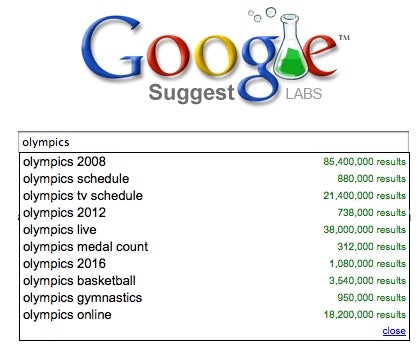
April 2008 Dewey (1st April 2008)
Information surrounding the Dewey index update was limited but the impact of this update was felt by many. The SEO community reported “reshuffling and tweaking” of two data centres and some suspected that Google was altering its internal properties.
2007 Google algorithm updates
May 2007 Universal Search Update (1st May 2007)
Universal Search was not a traditional algorithm update, but still an important step in Google’s evolution. Universal Search saw Google blend their search results to include listings such as news, videos, images, local results and books.
This opened up many doors for marketers keen to attract an audience through different types of search listings. Users no longer needed to rely on the tabs to do specialised searches as all relevant listings were brought onto one unified page.
2006 Google algorithm updates
November 2006 Supplemental Update (1st November 2006)
During the early era of Google Search, the search engine launched a feature called Supplemental Results. These results were powered by the supplemental index, a secondary bank of webpages that Google collected as a way to avoid bloat in its main index – which had passed the billion mark even in 2003.
On the 1st November 2006, there was an unconfirmed update to how the supplemental index was categorised and how the search engine treated filtered pages.
It is worth noting that the supplemental index has not been live for over a decade at the time of writing, and is now obsolete.

2005 Google algorithm updates
In 2005 we saw a couple of confirmed updates from Google, as well as the introduction of Google Analytics under the name “Urchin from Google”. It rapidly became a popular tool for website traffic analysis, which has evolved into Google Analytics 4 which we know and love today.
December 2005 Big Daddy Update (15th December 2005)
The Big Daddy update was rolled out over 4 months, concluding in March 2006. This update was an infrastructure update and focused on technical areas such as URL canonicalisation and redirects.
The new index function was introduced to evaluate the trustability of inbound and outbound links when deciding which pages of a website to index. Websites that engaged in unnatural or spammy linking techniques were ultimately penalised.
September 2005 Jagger Update (1 September 2005)
The Jagger update was rolled out in phases and focused on penalising websites with unnatural links, duplicate content and those with a large number of doorway pages.
Websites with duplicate content were most notably affected along with websites that had a large amount of doorway pages. Jagger also penalised websites that were engaging with black hat link building techniques such as hidden text, redirects and cloaking methods.
Jagger was ultimately the precursor to other algorithm updates such as Penguin.
2004 Google algorithm updates
February 2004 Brandy Update (1 February 2004)
The Brandy update was not an algorithm update. Instead, it focused on the expansion of the Latent Semantic Indexing (LSI) system which greatly enhanced Google’s ability to understand synonyms helping to improve the quality of search results for users.
Links and anchor text were also a focus of this update. Google identified that the quantity of poor links was increasing and as a result, they began to analyse and define the quality of both inbound and outbound links.
2003 Google algorithm updates
November Florida (1st November 2003)
The Florida update was Google’s first significant update. Whilst Google never divulged what the update focused on, it has been widely accepted that keyword stuffing and spammy links were the key focus. The Florida update was significant and saw many genuine sites penalised along with sites actively engaging in black-hat SEO techniques.
July Fritz (1st July 2003)
The introduction of the Fritz update saw an end to what was known as “Google Dance”. Google switched to what was known as incremental index updates which meant the index would update daily rather than every month as previously seen. These index updates were a lot more subtle compared to Google Dance and were welcomed by many SEOs and webmasters.
February Boston (1st February 2003)
The Boston update in February 2003 was the first confirmed and documented algorithm update from Google. It was given the name Boston as it was announced at the Search Engine Strategies conference held in Boston.
This update kicked off monthly updates throughout 2003 and was thought to be the first move away from working towards a high keyword density on any given page. This update placed more importance on meta information and less on spammy practices such as keyword stuffing and white copy on a white background.
Finding an agency
Work with Impression to navigate the ever-changing landscape of organic search.
This comprehensive guide has explained all of the major Google algorithm updates from 2003 to the present day. If your business is struggling to keep pace with the ever-changing search landscape, contact us to discuss how we can help or visit our SEO services page for more information.



